Science
(www.olympiadsuccess.com)
Chapter 13: Motion and time
Class VII
Multiple Choice Questions
Question 1
Which of the following cannot be used for measurement of time?
(a) A leaking tap.
(b) Simple pendulum.
(c) Shadow of an object during the day.
(d) Blinking of eyes.
Answer 1
(d)
Question 2
Two clocks A and B are shown in Figure 13.1. Clock A has an hour and a minute hand, whereas clock B has an hour hand, minute hand as well as a second hand. Which of the following statement is correct for these clocks?
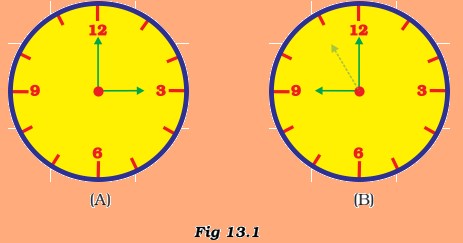
(a) A time interval of 30 seconds can be measured by clock A.
(b) A time interval of 30 seconds cannot be measured by clock B.
(c) Time interval of 5 minutes can be measured by both A and B.
(d) Time interval of 4 minutes 10 seconds can be measured by clock A.
Answer 2
(c)
Question 3
Two students were asked to plot a distance-time graph for the motion described by Table A and Table B.
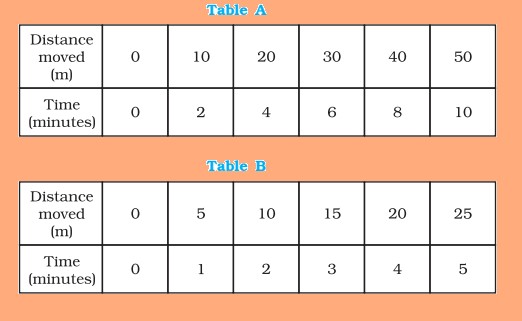

The graph given in Figure 13.2 is true for
(a) both A and B.
(b) A only.
(c) B only.
(d) neither A nor B. Distance moved (m)
Answer 3
(a)
Question 4
A bus travels 54 km in 90 minutes. The speed of the bus is
(a) 0.6 m/s
(b) 10 m/s
(c) 5.4 m/s
(d) 3.6 m/s
Answer 4
(b)
Question 5
If we denote speed by S, distance by D and time by T, the relationship between these quantities is
(a) S = D × T
(b) T = S / D
(c) S = D / T
(d) S = T / D
Answer 5
(c)
Question 6
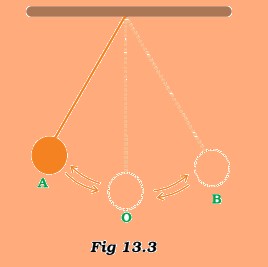
Observe Figure 13.3.
The time period of a simple pendulum is the time taken by it to travel from
(a) A to B and back to A.
(b) O to A, A to B and B to A.
(c) B to A, A to B and B to O.
(d) A to B.
Answer 6
(a)
Question 7
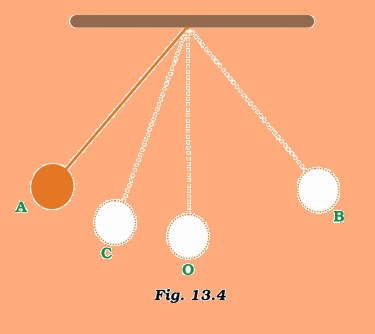
Fig. 13.4 shows an oscillating pendulum.
Time taken by the bob to move from A to C is t1 and from C to O is t2. The time period of this simple pendulum is
(a) (t1 + t2 )
(b) 2 (t1 + t2 )
(c) 3 (t1 + t2 )
(d) 4 (t1 + t2 )
Answer 7
(d)
Question 8
The correct symbol to represent the speed of an object is
(a) 5 m/s
(b) 5 mp
(c) 5 m/s-1
(d) 5 s/m
Answer 8
(a)
Question 9
Boojho walks to his school which is at a distance of 3 km from his home in 30 minutes. On reaching he finds that the school is closed and comes back by a bicycle with his friend and reaches home in 20 minutes. His average speed in km/h is
(a) 8.3
(b) 7.2
(c) 5
(d) 3.6
Answer 9
(b)
Very Short Answer Questions
Question 10
A simple pendulum is oscillating between two points A and B as shown in Figure 13.5. Is the motion of the bob uniform or non-uniform?
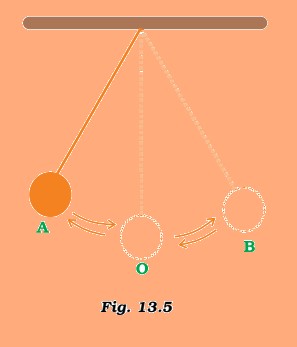
Fig. 13.5
Answer 10
Non-uniform.
Question 11
Paheli and Boojho have to cover different distances to reach their school but they take the same time to reach the school. What can you say about their speed?
Answer 11
Their speed will not be same.
Question 12
If Boojho covers a certain distance in one hour and Paheli covers the same distance in two hours, who travels in a higher speed?
Answer 12
Boojho moves at a higher speed as he covers the same distance
in a lesser time than Paheli.
Short Answer Questions
Question 13
Complete the data of the table given below with the help of the distance-time graph given in Figure 13.6.


Answer 13

Question 14
The average age of children of Class VII is 12 years and 3 months. Express this age in seconds.
Answer 14
12 years 3 months
= 12 × 365 + 3 × 30 = 4470 days
= 4470 × 24 × 60 × 60 s = 386208000 s
Question 15
A spaceship travels 36,000 km in one hour. Express its speed in km/s.
Answer 15
10 km/s
Question 16
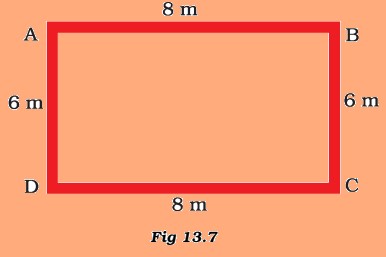
Starting from A, Paheli moves along a rectangular path ABCD as shown in Figure 13.7. She takes 2 minutes to travel each side. Plot a distance-time graph and explain whether the motion is uniform or non-uniform.
Answer 16
Since the distance covered per unit time for the entire distance
covered is not the same, the motion is non-uniform.
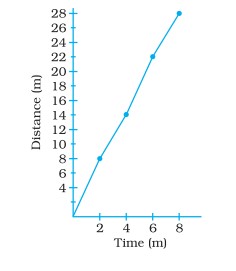
Question 17
Plot a distance-time graph of the tip of the second hand of a clock by selecting 4 points on x-axis and y-axis respectively. The circumference of the circle traced by the second hand is 64 cm.
Answer 17
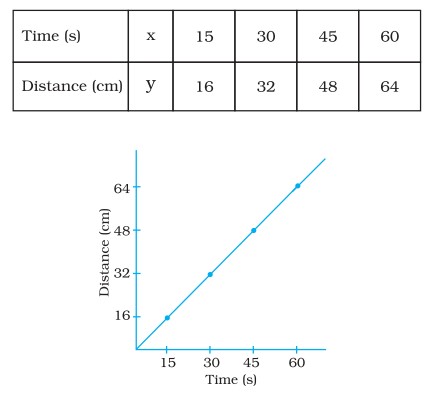
Long Answer Questions
Question 18
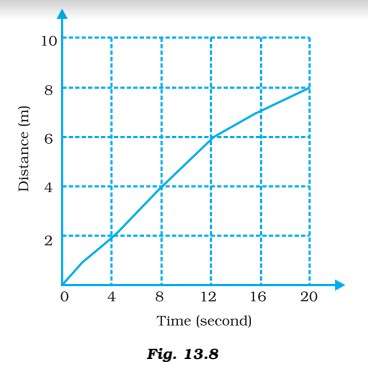
Given below as Figure 13.8 is the distance-time graph of the motion an object.
(i) What will be the position of the object at 20s?
(ii) What will be the distance travelled by the object in 12s?
(iii) What is the average speed of the object?
Answer 18
(a) 8 m from the starting point
(b) 6 m
(c) 0.4 m/s
Question 19
Distance between Bholu’s and Golu’s house is 9 km. Bholu has to attend Golu’s birthday party at 7 o’clock. He started from his home at 6 o’clock on his bicycle and covered a distance of 6 km in 40 minutes. At that point he met Chintu and he spoke to him for 5 minutes and reached Golu’s birthday party at 7 o’clock. With what speed did he cover the second part of the journey? Calculate his average speed for the entire journey.
Answer 19
12 km/h; Average speed 9 km/h
Question 20
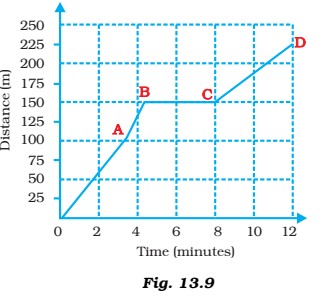
Boojho goes to the football ground to play football. The distance- time graph of his journey from his home to the ground is given as Figure 13.9.
(a) What does the graph between point B and C indicate about the motion of Boojho?
(b) Is the motion between 0 to 4 minutes uniform or non- uniform?
(c) What is his speed between 8 and 12 minutes of his journey?
Answer 20
(a) Boojho is at rest, i.e. his speed is zero
(b) Non-uniform
(c) 75 =18.75 m/minute 4
Yearlong program for Olympiads preparation & to build necessary skills for future.
Explore More
Time to mark your calendar with the upcoming Olympiads exam schedule.
Explore More
Take your Olympiad preparation to next-level by taking LIVE Classes.
Explore More
Assess your performance by taking topic-wise and full length mock tests.
Explore More
Online tuitions for international compeitions like SASMO, SEAMO, etc for Grades 1-11.
Explore More